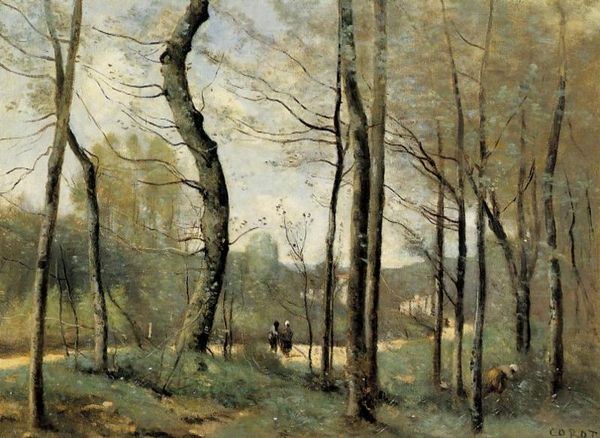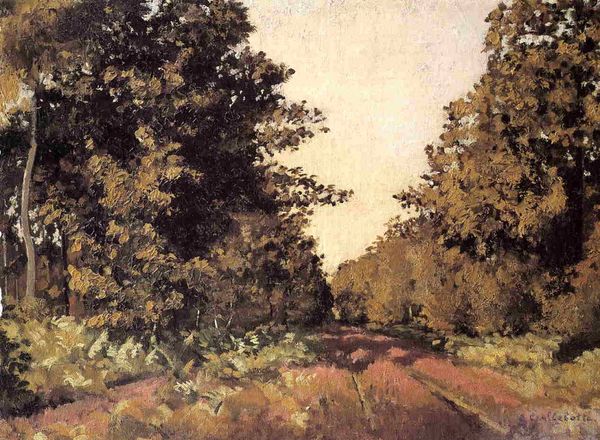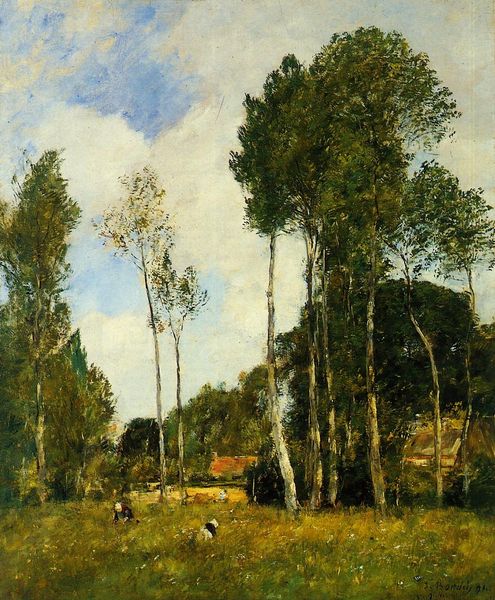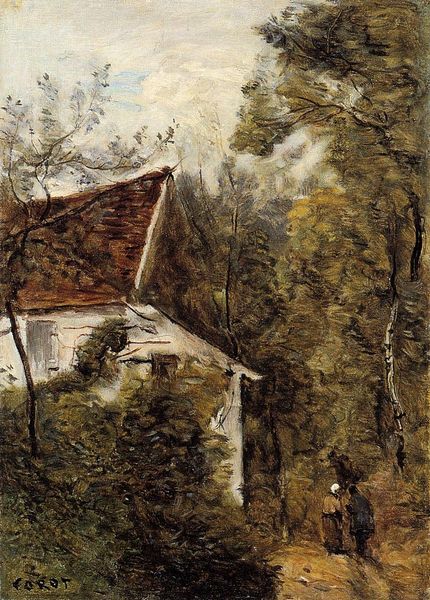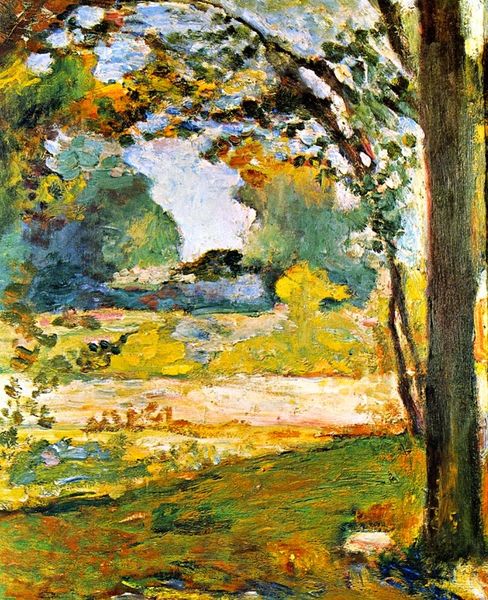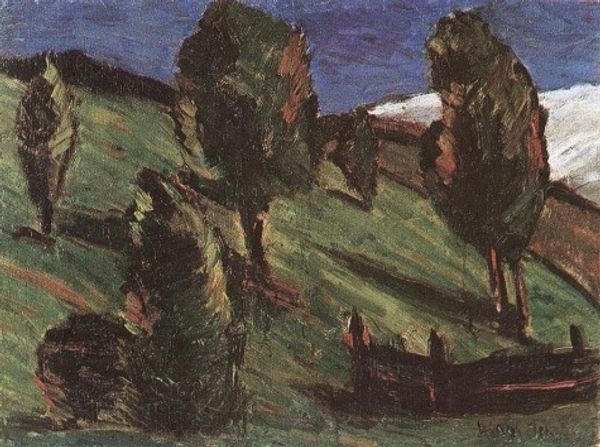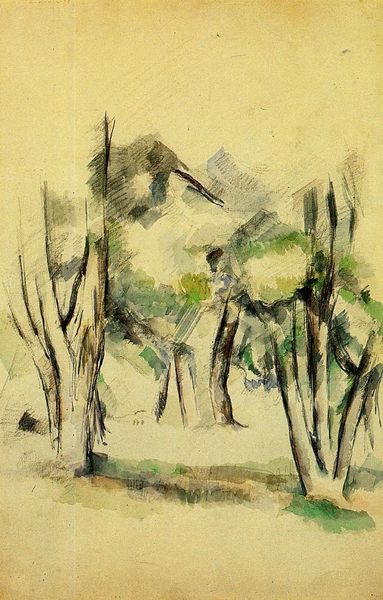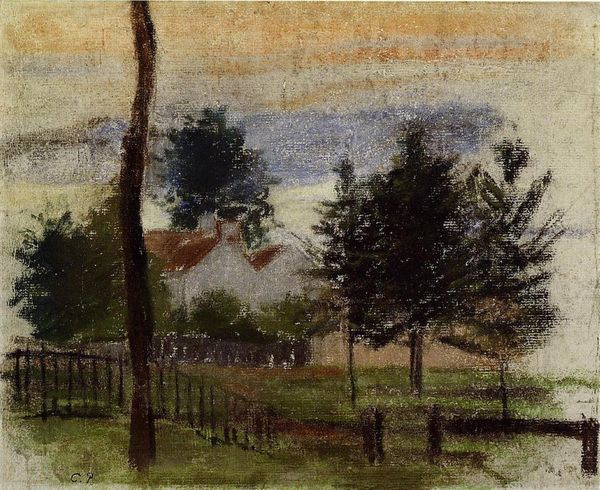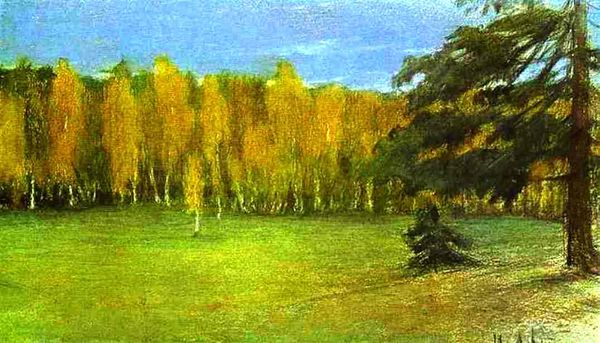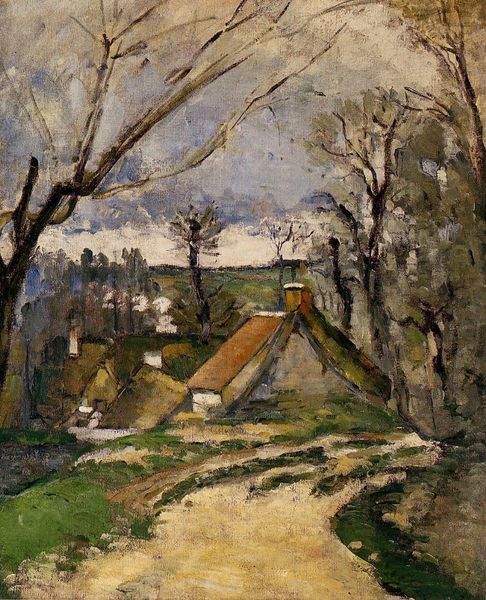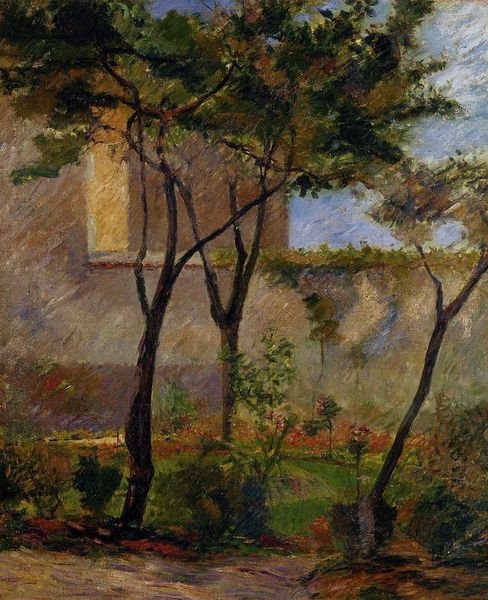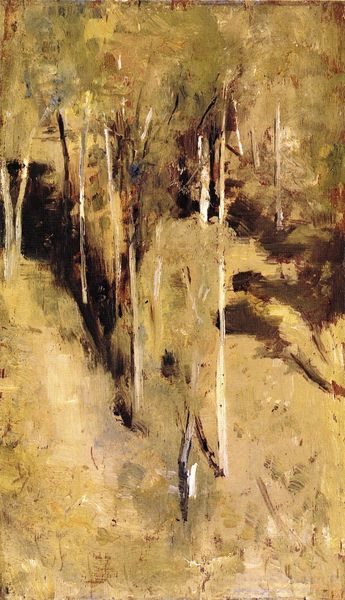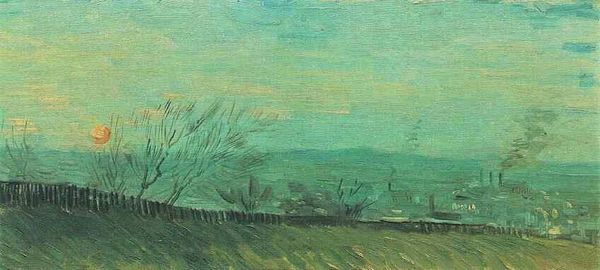
Dimensions: 23.5 x 16.1 cm
Copyright: Public domain
Curator: Jean-Baptiste-Camille Corot's "Near Rotterdam," completed in 1854, offers us a serene view of the Dutch countryside. It's an oil on canvas, rendered in Corot's signature plein-air style. Editor: My initial impression is one of quietude. There's a hushed, almost secretive quality to the light filtering through the trees. The limited palette reinforces this sense of peaceful introspection. Curator: Absolutely. We see Corot grappling with the burgeoning industrial age in relation to his contemporary rural subject. Notice the windmill in the distance and the trees framing the painting: a deliberate attempt to negotiate both urban and rural contexts. Consider this moment of massive wealth generation across Europe built on an expendable labour force that made it necessary for artists like Corot to grapple with its ever presence in the environment. Editor: The windmill, set back in the background behind figures and trees. This juxtaposition seems intentional. In my reading, it signifies more than mere technological progress, the shape recalls ideas around classical ruins while at the same time holding all the connotations around agricultural practices. I see its presence reflecting back to Europe's complicated social progress. The way in which light is broken up suggests an ephemeral relationship between people and production. Curator: That reading deepens our understanding of the artwork. And when you look closer, you might observe how that horse ridden by the men in silhouette almost merges with the shadow of the painting's wooded edge. Editor: It really feels like the shadow personifies them as men riding into the past. There's definitely something intriguing in the work's embrace of darkness—an element which calls on much darker aspects of modernity. In thinking of shadow and man, what do you make of those lone posts near the middle-ground cattle? They look like spectres dividing different planes of perspective. Curator: Another sharp observation, I would also like to note, to any astute viewers: there is also something curious at work around the romanticism on display, to see this type of idyllic scene which, for Corot, allowed for further expansion and support of capitalism Editor: Exactly, a visual symbol that allows audiences from a variety of socioeconomic backgrounds a familiar theme, but which also subtly reinforces notions about work as an aspect of personal fulfillment! It’s that tension—the visual pleasure set against potentially disquieting subtexts—that I find so compelling. Curator: And in that liminal space is an enduring resonance that ensures Corot’s relevance, almost two centuries after he painted "Near Rotterdam." Editor: Indeed. Art constantly pushes us to re-evaluate the meaning of our histories.
Comments
No comments
Be the first to comment and join the conversation on the ultimate creative platform.
